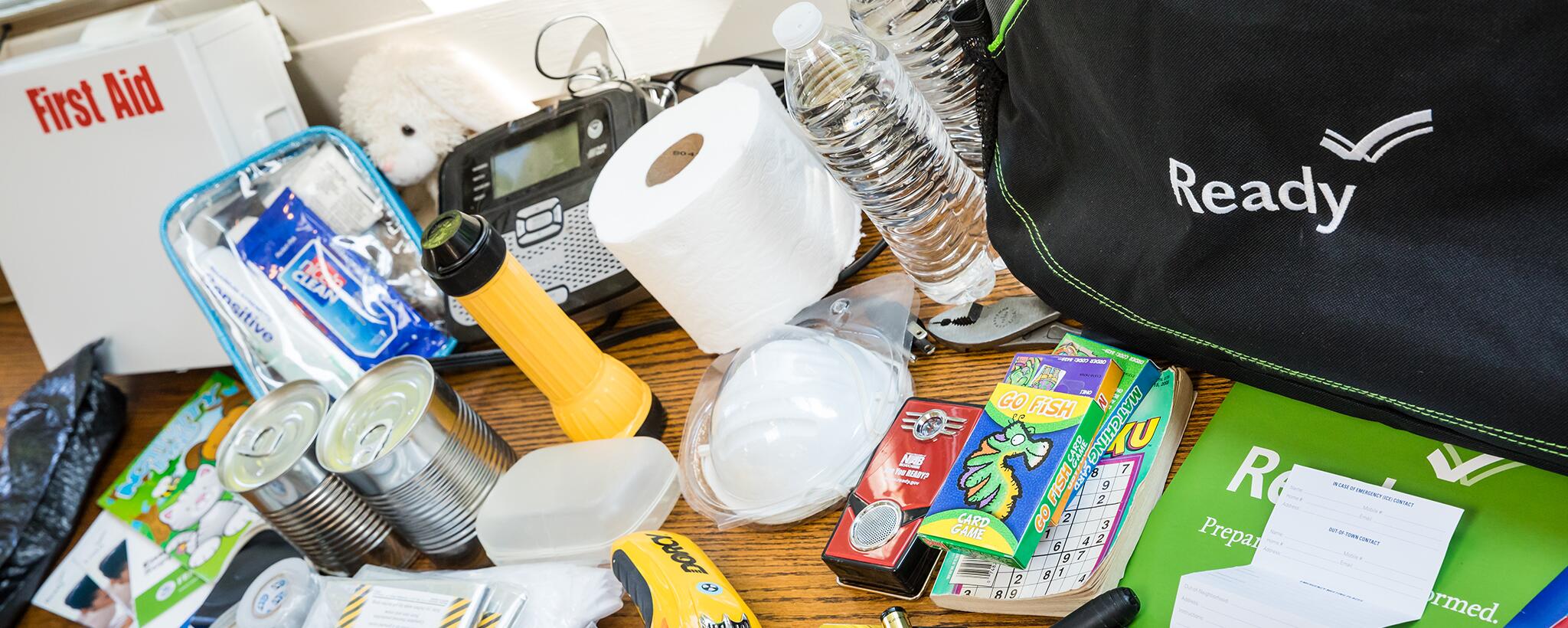If you live near the coastline, then you should already be aware of the risk of a tsunami, tropical cyclone or hurricane affecting you at some point. If so, you should already have a fully stocked disaster prep bag. If you’re still making one, then consider including the following items:

- Map of the area
While smart phones have numerous map options, if cell-towers around you go down it’s useful to have an offline map saved to your phone – or a physical map of the surrounding area shown, with the designated high lying areas highlighted as safe spaces for a tsunami, or a local gather point for hurricanes shown.
- Medical supplies
A basic first aid kit will cover most needs, from scraped hands and knees, to unexpected bruises or an allergy rash. It’s recommended each family member have a kit, with the adult bags holding additional trauma items like bandages and a burn kit. Insect repellent is another great to have but isn’t a requirement in a basic kit. Don’t forget to include items that family members with special needs must have like their best hearing aids, insulin or other prescription medications and devices.
- Personal hygiene items
A small pack with a toothbrush, toothpaste, soap, cloth or wet wipes will do for basic hygiene needs over a short period of time. Deodorant is a great addition if you have space.
- Water, Food and Perishable items
Most governments recommend that each family member has at least a 3-day supply of food and water, with some saying a 5-day supply should be the bare minimum. Energy bars are high calorie, and you can fit far more in a backpack than trying to fit in full-meal options – they also tend to have a longer expiry period. However, it’s up to you to take into consideration any special dietary requirements, such as formula for infants, or dairy-free for those with a lactose intolerance.
- Clothing, plus a mask and shoes
Seasonal clothing items should be switched into the bags, and a light cardigan or jersey should always be included – just in case you need to evacuate at night when the temperatures are cooler.
- Light and heat
A flashlight with backup batteries and blankets for each family member are a must – as the weather can be unpredictable and you never know when exactly you’ll be evacuating.
- Cash and Entertainment
If power’s out, then cash is king – and a varying amount of around $200 in small bills should help you grab any small luxuries you may need in the short term. Some form of entertainment should be included in each pack – from cards to a favourite family board game, or click here to understand more about the other options available. Remember to include some options for children too – like a child-friendly puzzle or crayons and a notepad.
Other Items To Consider
Secondary items to consider in a communal bag for all to share should include pet food, baby items not in your nappy bag like medicine, a cooking or mess kit. If possible, ensure you have a tent or other shelter option, as it’s not entirely necessary but would make an evacuation easier to bear if you were stuck for several days away from your property. A portable urinal is another great device to include, but a bucket, spade and eco-friendly toilet paper are a much easier to find and pack items.
The final thing to do before your kit is finished, is include a list within each bag of personal items each family member would need to grab if a warning for your area came suddenly. This list should include commonly used items you can’t pack in a grab bag, like your work laptop, or important documents and photos on a flashdrive. Don’t forget to make a note of bringing along your baby’s favourite stuffed toy or soother when you consider stretch tents for sale around the globe.
Packs should always be checked every 6-months, so set a reminder on your mobile phone to restock those perishable items.

Leave a Reply